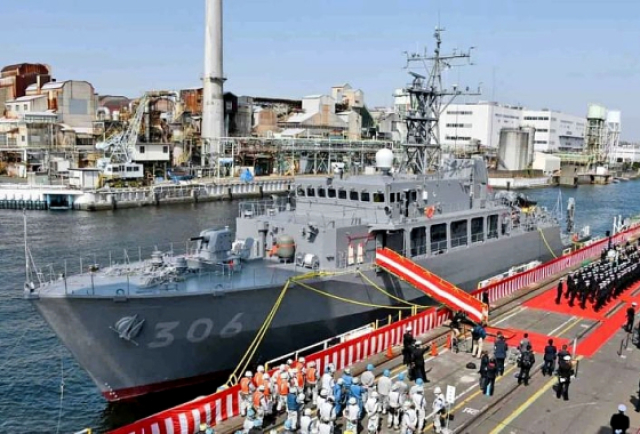TSAMTO, March 17. During a ceremony held on March 16 at the Japan Marine United (JMU) Corporation in Yokohama (Kanagawa Prefecture), the Japan Maritime Self-Defense Force received the third Awaji-class PMO ship.
The vessel, named (306) "Etajima" (Etajima), will be part of the 3rd Division of minesweepers of the Japanese Maritime Self-Defense Forces, located at the Kure Naval base (Hiroshima Prefecture).
The keel laying (306) of the Etajima took place in February 2018, and the launch took place in December 2019. A representative of the Japan Maritime Self-Defense Force said that the cost of building the third vessel under the contract concluded in 2017 was 17.7 billion rubles. yen ($162 million).
The ship's equipment includes a LIDAR system that allows you to detect objects under water at a great distance both during the day and at night. The vessel is also equipped with a single-use mine disposal system developed by Mitsui E&S Holdings and a variable depth gas system (VDS) manufactured by Hitachi, which provides detection, location determination and classification of mines. The equipment includes unmanned underwater vehicles for detecting and neutralizing mines at great depths.
As reported by TSAMTO, the lead ship of the series, Awaji, was launched at the JMU shipyard in October 2015 and adopted by the Japan Maritime Self-Defense Force in March 2017. The second ship in the series, the Hirado, was transferred to the Japanese Navy on March 19, 2018.
At the end of August 2020, the command of the Japan Maritime Self-Defense Force was allocated about 12.6 billion rubles. YEN ($118 million) for the construction of the fourth ship in the series, which is expected to be launched in 2022 and put into service in March 2024.
According to JMU, the length of the ship is 67 m, the maximum width is 11 m, the draft is 5.2 m, the standard displacement is 690 tons, the crew is about 60 people. The vessel is equipped with two diesel engines with a capacity of 2200 hp and develops a maximum speed of 14 knots.
The ship's hull is made of a composite material-reinforced fiberglass to reduce weight and the threat of explosion on mines during trawling. In addition, this material is resistant to corrosion. The Awaji-class vessels are expected to be in service for more than 30 years, while the wooden-hulled minesweeper has a service life of about 20 years.
The Awaji-class ships are intended to replace the three 1,000-ton wooden-hulled Yaeyama-class minesweepers that were retired from the fleet by 2017.

